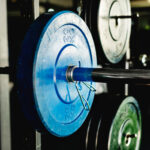Exercises You Should Be Doing: Quadruped Rhythmic Stabilizations
What Is It: Quadruped Rhythmic Stabilizations
Who Did I Steal It From: This is one of those exercises where when I originally saw it, I immediately thought to myself “huh, why didn’t I think of that?”
As it is, Mike Reinold is a helluva lot smarter than I am. And while the word “steal” is a bit of a misnomer given that there were 40+ other people in attendance when I saw it demonstrated a few weekends ago, nonetheless, I still need to give credit where credit is due.
What Does It Do: Before I get into that, lets take a few steps back and get a little geeky for a moment. If I were to ask you what is the function of the rotator cuff, what would you say? If I were a betting man, I’d garner that the vast majority of people reading would say one of three things:
- External/Internal rotation of the arm (glenohumeral joint).
- Elevates the arm in the scapular plane.
- (crickets chirping) ummm, uhhhh, (crickets chirping) Throw me a freakin bone dude. Isn’t this the part of the post where you post a picture of a scantily clad hot chick?
If you mentioned either of the two former options- congratulations you’ve obviously read an anatomy book within the past 25 years. As such, while you’re technically not wrong, you’re not entirely correct either. But more on this in a bit. In regards to the latter option, THIS is actually the point where I post a picture of a scantily clad hot chick:
To that end, while the rotator cuff does invariably play a significant role in external/internal rotation, as well as elevation of the arm, you’d be remiss not to recognize that it’s main function is to simply center the humeral head within the glenoid fossa.
That said, with respects to rotator cuff rehab (as well as preventative maintenance in general), Mike Reinold has noted on several occasions that one of the most important aspects is dynamic stability. This is particularly true when dealing with athletes, which makes a lot of sense given the more dynamic nature of sports.
As a general rule of thumb, athletes (specifically overhead athletes) inherently have poor static stability and require precise interaction of the dynamic stabilizers, which coincidentally, is exactly what the above exercise accomplishes.
Key Coaching Cues: Placing a medicine ball on the floor, simply have the athlete place his/her palm on the ball and assume the quadruped position- locking their scapulae back (pack the shoulder). The coach will then GENTLY perturb the athlete’s arm, which in turn, will force him or her to dynamically stabilize the joint.
Just to be clear, let me reiterate that there is absolutely no need to go crazy. You don’t need to have an epileptic seizure here and try to knock the person off the ball. Rather, you’re just going to gently tap the upper arm and elbow for 5-10 seconds, and then switch to the opposite side.
Of note, I’ve placed this exercise at the beginning of a training session (as part of a warm-up/activation circuit), as well as at the tail end of a session (as part of a rotator cuff rehab/prehab/whatever you want to call it finisher). It’s not an overly taxing exercise, so I’d leave it to personal preference with regards to where to place it in a program.


